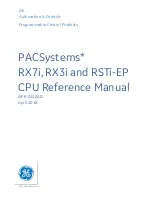
ZED-F9H - Integration manual
Figure 14: ZED-F9H input isolation
3.6.1 UART
A Universal Asynchronous Receiver/Transmitter (UART) port consists of an RX and a TX line. Neither
handshaking signals nor hardware flow control signals are available. The UART interface protocol
and baud rate can be configured but there is no support for setting different baud rates for reception
and transmission.
The ZED-F9H includes two UART serial ports. UART1 can be used as a host interface for
configuration, monitoring and control. UART2 is available as an optional stand-alone correction
interface and cannot be used as a host interface.
The UART RX interface will be disabled when more than 100 frame errors are detected
during a one-second period. This can happen if the wrong baud rate is used or the UART RX
pin is grounded. An error message appears when the UART RX interface is re-enabled at the
end of the one-second period.
Baud rate
Data bits
Parity
Stop bits
9600
8
none
1
19200
8
none
1
38400
8
none
1
57600
8
none
1
115200
8
none
1
230400
8
none
1
460800
8
none
1
921600
8
none
1
Table 18: Possible UART interface configurations
The default baud rate is 38400 baud. To prevent buffering problems it is recommended not
to run at a lower baud rate than the default.
Note that for protocols such as NMEA or UBX, it does not make sense to change the default word
length values (data bits) since these properties are defined by the protocol and not by the electrical
interface.
If the amount of data configured is too much for a certain port's bandwidth (e.g. all UBX messages
output on a UART port with a baud rate of 9600), the buffer will fill up. Once the buffer space is
exceeded, new messages to be sent will be dropped. To prevent message loss, the baud rate and
UBX-19030120 - R04
3 Receiver functionality
Page 32 of 101
C1-Public
















































